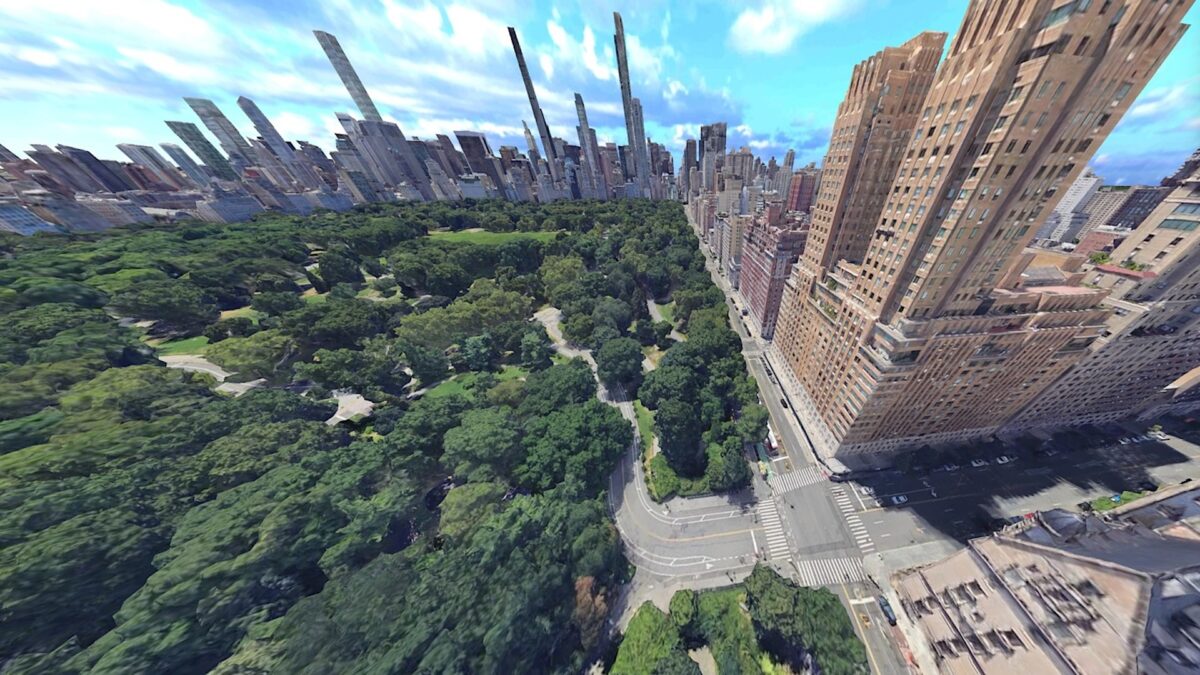Hands-on with EarthQuest on Quest 3: Google Earth VR, is it you?

EarthQuest is another Quest app that aims to bring Google Earth VR to the standalone headset. What's the experience like?
Wooorld, Fly and EarthQuest: All three VR apps let you explore the world in 3D. This is possible thanks to Google's Photorealistic 3D Tiles API, which makes Google Earth's 3D maps available to third-party developers and apps.
I tried Wooorld almost two years ago, while I recently took a look at Fly. In my hands-on with Fly, I praised the fact that you can fully immerse yourself in Google's digital counterpart of the world, while Wooorld only renders it on a table in front of you.
And what about EarthQuest? I first looked at this VR app in the spring, but didn't write about it because I was put off by the UI and performance. Since I've heard a lot of good things about EarthQuest in the meantime, I thought I'd give the VR app another try to see if it had improved. Spoiler: it did.
Clunky interface, plenty of settings
The overall design has not changed much. After launching the application for the first time, you are still overwhelmed by menus, options, and text explanations. A user-friendly start looks different.
The good news is that after a little familiarization, you will find your way around the VR app and appreciate all the settings and features that EarthQuest offers.
While Fly is certainly better suited for VR beginners and casual users, EarthQuest is aimed at more demanding people and nerds.
Here you can adjust a lot of things in the visual area alone: The render resolution, the level of detail of the terrain, and how many 3D tiles are loaded at a time. All of these factors affect the performance of the VR app, and you can prioritize which aspect you prefer.
Of course, EarthQuest does not come close to the PC VR experience in terms of visuals, as Quest still lacks the processing power. But the quality is good enough to be enjoyable, at least with Quest 3.
The full feature package
As with Google Earth VR, navigation is hand-controlled, so you can set the direction of flight by moving your hand. This is a big plus, along with the comfort settings (snap turn, vignette).
EarthQuest also supports Google Street View, although some 360° panoramas failed to load or loaded very slowly for me. An exclusive feature is the customizable day/night change, as well as the ability to adjust the human scale so you can see the world as if you were a human or a giant.
The VR app also offers optional hand-tracking controls, a multiplayer mode, and ChatGPT integration (I didn't try these features). Locations can be saved so you can return to them at any time.
As you can see, EarthQuest has many options and features that make it the best Quest alternative to Google Earth VR right now. For demonstration purposes, however, Fly may be a better choice because it is built for accessibility.
Both VR apps are regularly updated and improved, so it's worth keeping an eye on both.
EarthQuest is available for $9 on the Horizon Store, and Fly for $10 on the Horizon Store.
Note: Links to online stores in articles can be so-called affiliate links. If you buy through this link, MIXED receives a commission from the provider. For you the price does not change.